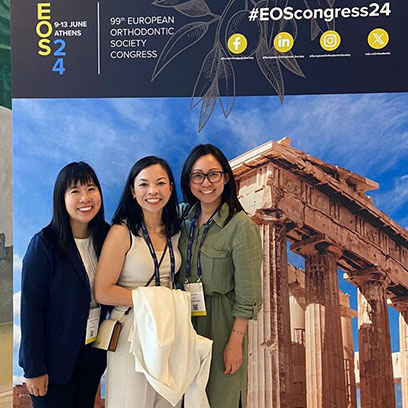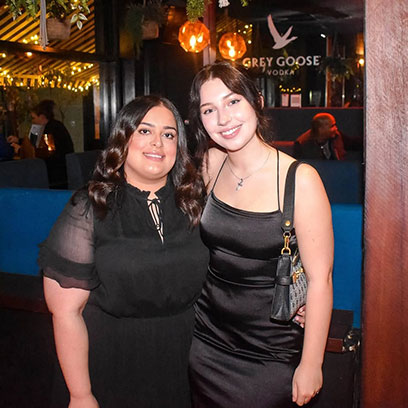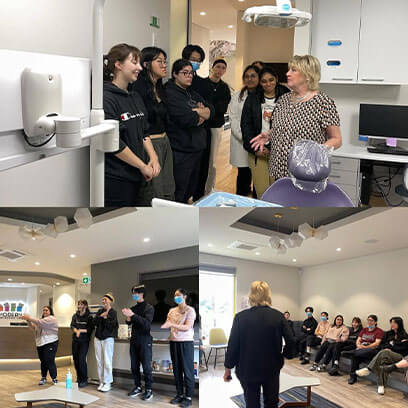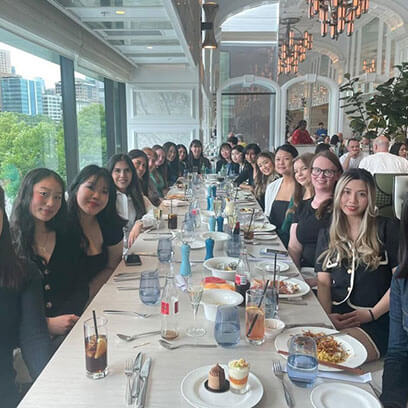At the start of orthodontic treatment, most patients ask the price, the best braces, and the quickest way for alignment. But it’s uncommonly asked what can make the teeth perpetually aligned. The answer to forever? Orthodontic retention.
What Is Orthodontic Retention?
Orthodontic retention is the phase of maintaining the new position and alignment of the teeth. It is, therefore, as crucial as orthodontic treatment.
During the process, retainers are installed to keep the teeth from moving. As we age, so does our face, jaw, and teeth. Teeth tend to move back to their original position once the braces or Invisalign are removed. Aside from growth, this is because the teeth, gums, and soft tissues in the mouth take time to adjust to their new placement.
According to an orthodontist’s recommendation, failure to use retainers will likely cause the recurrence of gaps, crowding, and changes in the bite. Modern Orthodontics provides extra care to guide you on a holistic orthodontic treatment until retention.
Types of Retainers
Retainers are custom-made orthodontic devices specifically designed to prevent teeth from relapsing. Retainers can either be removable or fixed, and an orthodontist’s assessment will determine what’s best for you.
1. Removable Retainers
Plate and Clear Plastic Retainers are both removable appliances that can be taken off when not in use. Removable retainers can be easily cleaned since they can be taken out while also cleaning your mouth. A drawback is you have to remember to put it back.
Plate retainers are thin, stripped wires with a moulded acrylic base fitted to the roof of the mouth. This type of retainer is cheap and effective for most patients. Clear Plastic Retainers look almost the same as Invisalign. Plastic retainers are transparent and worn over the teeth.
2. Permanent or Fixed Retainers
Permanent or Fixed Retainers consist of a thin wire attached to the back surfaces of the teeth. This retainer is commonly used for the lower incisor but can also be installed at the upper incisor if the bite does not cause discomfort.
Since this kind of retainer is permanently fixed, it can be inaccessible to floss or clean and may require long term consultations which also implicate cost. However, the main advantage is never remembering to wear it again.
How long and often you need your retainers is up to an orthodontist. Some might be required to use them only at night, and others may need to wear them every day for a year. Nevertheless, it’s always case-to-case and largely depends on the mouth condition pre-treatment.
Tips for Hygiene and Protection
Removable Retainers
Plate and Clear Plastic Retainers are both removable appliances that can be taken off when not in use. Removable retainers can be easily cleaned since they can be taken out while also cleaning your mouth. A drawback is you have to remember to put it back.
Plate retainers are thin, stripped wires with a moulded acrylic base fitted to the roof of the mouth. This type of retainer is cheap and effective for most patients. Clear Plastic Retainers look almost the same as Invisalign. Plastic retainers are transparent and worn over the teeth.
2. Permanent or Fixed Retainers
Permanent or Fixed Retainers consist of a thin wire attached to the back surfaces of the teeth. This retainer is commonly used for the lower incisor but can also be installed at the upper incisor if the bite does not cause discomfort.
Since this kind of retainer is permanently fixed, it can be inaccessible to floss or clean and may require long term consultations which also implicate cost. However, the main advantage is never remembering to wear it again.
How long and often you need your retainers is up to an orthodontist. Some might be required to use them only at night, and others may need to wear them every day for a year. Nevertheless, it’s always case-to-case and largely depends on the mouth condition pre-treatment.
Tips for Hygiene and Protection
Removable Retainers
Retainers must be kept in their container when not in use. It is not advisable to wrap it with tissue and other loose materials to prevent damage and accidentally throw it. Do not eat, toothbrush, and play sports with retainers on. This might cause damage, or worse, breakage. Only use a soft-bristled toothbrush to gently remove bacteria and soak in a retainer cleaner or warm water when cleaning.
Hygiene expert and Water Distiller CEO Austin Tanner notes, “We recognize the role of water in maintaining oral health. We serve knowing that we help people maintain good hygiene.”
Fixed Retainers
Fixed retainers are prone to plaque build-up. Practice flossing at least once a day and brush at least twice daily for oral and retainer care. Always be mindful of your diet and avoid hard foods such as apples.
Like orthodontic treatment, it’s important that your orthodontist regularly checks your retainers to ensure that the appliance is still fit for its purpose, which is why Modern Orthodontics includes a one year retention period after you finish your treatment for no extra fee.
Written by: Chloe Harris
Author Bio
Chloe Harris is an aspiring writer and content creator. She is driven to create content that increases website traffic, clicks and conversions. She is planning to start her own content writing firm with the skills she’s learned.
Back
















